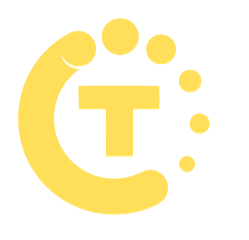A Comprehensive Guide – ttps://docs.google.com/document/__pii_deleted__

In the modern digital landscape where data breaches and privacy concerns dominate headlines, understanding how platforms handle sensitive information has become paramount. One particularly intriguing phenomenon that many Google Docs users encounter is the appearance of the term “ttps://docs.google.com/document/pii_deleted”. This seemingly cryptic string represents more than just a broken link—it’s a manifestation of sophisticated privacy protection mechanisms at work.
The prevalence of this term has grown alongside increasing regulatory requirements for data protection, making it essential for both individual users and organizations to comprehend its significance. This comprehensive guide will delve deep into the technical, legal, and practical aspects surrounding “ttps://docs.google.com/document/pii_deleted”, providing you with the knowledge needed to navigate document sharing while maintaining robust data privacy standards.
We’ll explore the technical underpinnings of how Google’s systems detect and handle Personally Identifiable Information (PII), examine the various scenarios that lead to this placeholder URL appearing, and provide actionable strategies for managing documents that may contain sensitive data. Additionally, we’ll discuss the broader implications for compliance with global data protection regulations and offer best practices for secure document management in professional environments.
Understanding the Technical Meaning Behind “ttps://docs.google.com/document/pii_deleted”
The appearance of “ttps://docs.google.com/document/pii_deleted” is not arbitrary but rather the result of deliberate design choices in Google’s document management ecosystem. At its core, this modified URL serves as a clear indicator that the system has identified and acted upon sensitive content within a document. The term “PII” in the URL stands for Personally Identifiable Information, which encompasses any data that could potentially identify a specific individual.
Google’s automated scanning systems employ advanced machine learning algorithms and pattern recognition techniques to detect various forms of PII. These systems are trained to identify not just obvious markers like Social Security numbers or credit card information, but also more subtle forms of personal data that might be embedded in documents. When such information is detected, the platform takes protective action by either restricting access to the document or modifying its sharing properties, resulting in the distinctive “ttps://docs.google.com/document/pii_deleted” placeholder.
The technical implementation of this feature reflects Google’s multi-layered approach to data security. At the infrastructure level, documents are continuously scanned both at rest and during transmission. The scanning process occurs in real-time as documents are uploaded or modified, as well as through periodic system-wide sweeps that re-examine existing content for newly identified PII patterns. This dynamic scanning capability allows Google to adapt to evolving privacy requirements and newly recognized forms of sensitive data.
The modification of the URL itself serves multiple technical purposes. First, it provides immediate visual feedback that the document’s accessibility has changed due to PII concerns. Second, it creates a distinct identifier that can be logged and tracked for auditing purposes. Third, it prevents the accidental propagation of sensitive information through shared links, as the modified URL effectively breaks any existing sharing chains that might have contained PII.
Detailed Examination of Why “ttps://docs.google.com/document/pii_deleted” Appears
The circumstances leading to the appearance of “ttps://docs.google.com/document/pii_deleted” are varied and often depend on multiple contextual factors. One primary trigger is the automated detection of sensitive content during Google’s routine document scanning processes. These scans are particularly thorough in enterprise environments where Google Workspace administrators have implemented strict data governance policies.
In organizational settings, the appearance of this placeholder URL frequently correlates with violations of pre-configured data loss prevention (DLP) rules. These rules can be customized to an organization’s specific needs, allowing administrators to define exactly what constitutes sensitive information within their operational context. For instance, a healthcare provider might configure their DLP policies to flag medical record numbers, while a financial institution might focus on account numbers and transaction details.
Another common scenario involves documents that undergo ownership changes or permission modifications. When a document containing PII is transferred from one user to another, or when sharing permissions are adjusted, Google’s systems may re-evaluate the document’s content against current privacy standards. This re-evaluation can sometimes result in previously accessible content being restricted and the URL being updated to the “ttps://docs.google.com/document/pii_deleted” format.
Temporal factors also play a role in these automated decisions. Google frequently updates its PII detection algorithms to comply with new regulations or to address emerging privacy concerns. A document that was perfectly acceptable yesterday might trigger PII warnings today if the detection parameters have been refined. This dynamic nature of content evaluation means users must remain vigilant about the types of information they store in cloud-based documents.
The platform’s handling of false positives—instances where benign content is mistakenly flagged as PII—also contributes to the appearance of this placeholder. While Google’s detection systems are sophisticated, they’re not infallible, and certain combinations of numbers or text patterns might inadvertently trigger the PII protection mechanisms. Understanding this possibility is crucial for users who find their legitimate documents unexpectedly restricted.
Comprehensive Strategies for Managing Documents Affected by PII Redaction
When confronted with the “ttps://docs.google.com/document/pii_deleted” placeholder, users and administrators need a systematic approach to address the situation effectively. The first step involves proper diagnosis—determining exactly why the PII redaction occurred. Google typically provides some level of notification or explanation when it restricts access to a document, though the specificity of these messages can vary depending on the context.
For individual users, the recovery process often begins with reviewing the document’s version history. Google Docs maintains a comprehensive record of all changes made to a document, and in some cases, it may be possible to revert to a version that doesn’t contain the flagged PII. This approach requires careful examination of each version to identify exactly when and where the sensitive information was introduced.
In organizational environments, the resolution process typically involves coordination between the document owner and IT administrators. Workspace administrators have access to more detailed audit logs and restoration tools that can help recover documents while maintaining compliance. They can also adjust DLP policies if necessary, though such changes should always be made with careful consideration of the organization’s overall data protection strategy.
Preventative measures are equally important in managing PII-related issues. Users should develop habits of regularly scanning documents for potential PII before sharing them widely. Google offers built-in tools for this purpose, including the “Check document” feature that can identify potential privacy concerns. Third-party add-ons and extensions are also available for more specialized PII detection needs.
For documents that genuinely require the inclusion of sensitive information, alternative sharing methods should be considered. Google’s Confidential Mode for Gmail provides additional controls over how recipients can interact with sensitive documents. Alternatively, documents containing PII might be better suited for more secure platforms specifically designed for handling sensitive data, with access controlled through multi-factor authentication and detailed permission structures.
Legal and Regulatory Implications of PII Handling in Cloud Documents
The appearance of “ttps://docs.google.com/document/pii_deleted” is deeply intertwined with the complex web of global data protection regulations. In recent years, legislative bodies worldwide have significantly strengthened requirements for handling personal data, and cloud service providers like Google have responded by implementing increasingly robust protective measures.
The European Union’s General Data Protection Regulation (GDPR) has been particularly influential in shaping how platforms handle PII. Under GDPR, organizations processing EU citizens’ data must implement appropriate technical and organizational measures to ensure data protection by design and by default. Google’s automatic PII detection and the subsequent URL modification can be viewed as part of this compliance framework, helping users avoid accidental violations of GDPR’s strict provisions.
In the United States, a patchwork of state-level regulations has emerged, with the California Consumer Privacy Act (CCPA) being the most prominent. These regulations often include specific requirements for the handling of certain categories of personal information, and Google’s systems are calibrated to recognize and protect these data types accordingly. The “ttps://docs.google.com/document/pii_deleted” mechanism thus serves as a compliance tool for organizations subject to these varied regulations.
Industry-specific regulations add another layer of complexity. Healthcare organizations dealing with protected health information (PHI) under HIPAA, financial institutions subject to GLBA, or educational institutions handling student records under FERPA all have unique compliance requirements that influence how PII should be managed in documents. Google Workspace offers specialized configurations for many of these regulated industries, with the PII protection features being a central component.
The legal implications extend beyond mere compliance. In the event of a data breach, organizations that can demonstrate systematic PII protection measures—including the use of automated tools like Google’s PII detection—may benefit from reduced liability. Conversely, failure to properly secure sensitive information in documents could lead to regulatory penalties, civil lawsuits, and reputational damage.
Best Practices for Organizations to Mitigate PII-Related Document Issues
For businesses and institutions regularly handling sensitive information, developing comprehensive strategies to prevent “ttps://docs.google.com/document/pii_deleted” scenarios is essential for maintaining workflow continuity while ensuring compliance. These strategies should encompass technological solutions, policy frameworks, and employee education initiatives.
A foundational best practice involves implementing granular access controls. Google Workspace administrators should establish clear hierarchies of document access, ensuring that sensitive information is only available to personnel with a legitimate need. This might involve creating separate organizational units with different permission sets, or implementing attribute-based access control (ABAC) systems that consider multiple factors when granting document access.
Document classification systems represent another critical component of an effective PII management strategy. By requiring users to tag documents based on sensitivity level at creation, organizations can apply appropriate protection measures proactively rather than reactively. Many enterprises integrate third-party classification tools with their Google Workspace environment to enhance this functionality.
Employee training programs should address proper document handling procedures comprehensively. Staff members need to understand not just how to avoid triggering PII protections, but why these protections exist and how they contribute to overall organizational security. Training should include practical exercises in identifying potential PII, using alternative sharing methods for sensitive documents, and responding appropriately when access is restricted.
Technical safeguards should be complemented by clear policy documents outlining acceptable use of cloud storage and collaboration tools. These policies should specify which types of information are never to be stored in shared documents, preferred alternatives for sensitive data, and procedures for handling exceptional cases where PII must be included in collaborative documents temporarily.
Regular audits and compliance checks help maintain the effectiveness of these measures over time. Organizations should periodically review their Google Drive contents for potential PII exposure, test their DLP rule effectiveness, and verify that all personnel are adhering to established protocols. These reviews can often uncover process improvements or additional training needs before they result in actual compliance issues.
Future Developments in PII Protection and Document Management
As digital collaboration continues to evolve, so too will the mechanisms for protecting sensitive information within shared documents. The “ttps://docs.google.com/document/pii_deleted” placeholder represents just one stage in an ongoing development trajectory toward more sophisticated, user-friendly privacy protections.
Emerging technologies like differential privacy and homomorphic encryption may eventually allow for more granular control over document access, potentially reducing the need for blanket restrictions. These advanced cryptographic techniques could enable scenarios where specific sensitive data points within a document are automatically redacted based on viewer permissions, while the rest of the document remains fully accessible.
Machine learning advancements will likely lead to more accurate PII detection with fewer false positives. Future iterations of Google’s scanning algorithms may better understand context, distinguishing between actual sensitive information and benign text that merely resembles PII patterns. This improvement would reduce unnecessary disruptions while maintaining strong privacy protections.
The regulatory landscape will continue to shape these developments as well. With new privacy laws emerging in various jurisdictions and existing regulations being refined, cloud providers will need to adapt their PII handling mechanisms accordingly. Users may see more region-specific variations in how PII protection is implemented, with different thresholds or procedures based on the document creator’s location and the applicable legal frameworks.
User interface improvements could make PII-related notifications and controls more intuitive. Rather than encountering a cryptic modified URL, users might receive clearer explanations of why access was restricted and more straightforward paths to resolution. Enhanced administrator dashboards could provide better visibility into PII incidents across an organization’s entire document repository.
Integration with broader digital identity systems may offer alternative approaches to PII protection. As decentralized identity solutions gain traction, documents might automatically adjust their content based on verified attributes of the viewer, eliminating the need for binary access decisions while still protecting sensitive information appropriately.
Conclusion
The “ttps://docs.google.com/document/pii_deleted” phenomenon encapsulates the complex interplay between user convenience, collaborative functionality, and essential privacy protections in modern digital workspaces. What might initially appear as a simple technical glitch is actually a sophisticated safeguard against data exposure, reflecting Google’s commitment to helping users maintain compliance with increasingly stringent privacy regulations.
Understanding the mechanisms behind this URL modification empowers users and organizations to navigate document sharing more effectively while minimizing disruptive access restrictions. By implementing proactive PII management strategies, maintaining awareness of regulatory requirements, and staying informed about evolving platform capabilities, document collaborators can achieve both productivity and compliance in their digital workflows.
As cloud-based collaboration continues to dominate professional environments, the principles underlying the “ttps://docs.google.com/document/pii_deleted” functionality will only grow in importance. Organizations that master these concepts and integrate them thoughtfully into their operations will be better positioned to protect sensitive information while leveraging the full potential of digital collaboration tools.
The journey toward optimal document security is ongoing, with each interaction involving sensitive data serving as both a responsibility and an opportunity to refine practices. By viewing the “ttps://docs.google.com/document/pii_deleted” not as an obstacle but as a valuable protective feature, users can contribute to creating a more secure digital ecosystem for all participants in the collaborative process.







